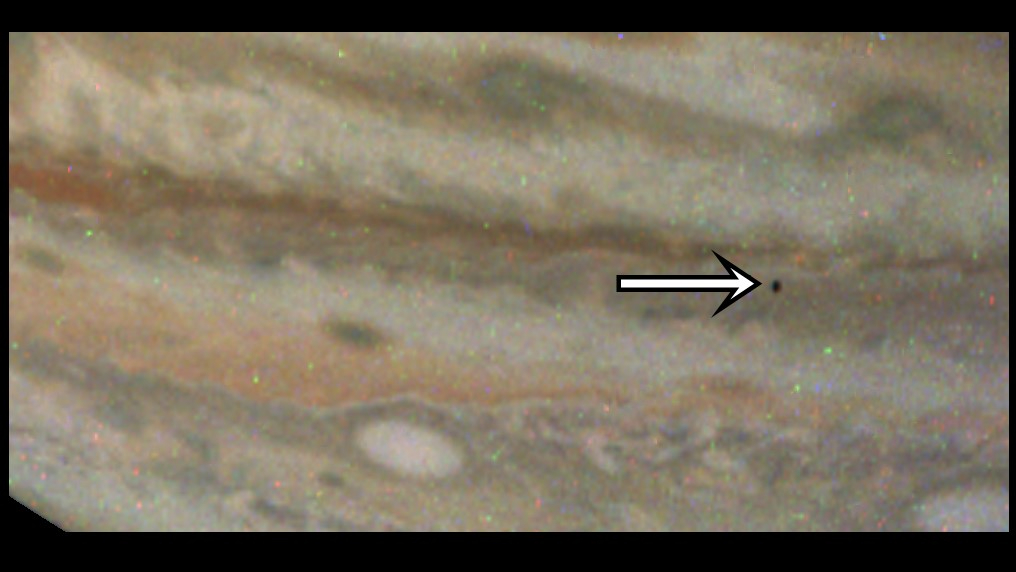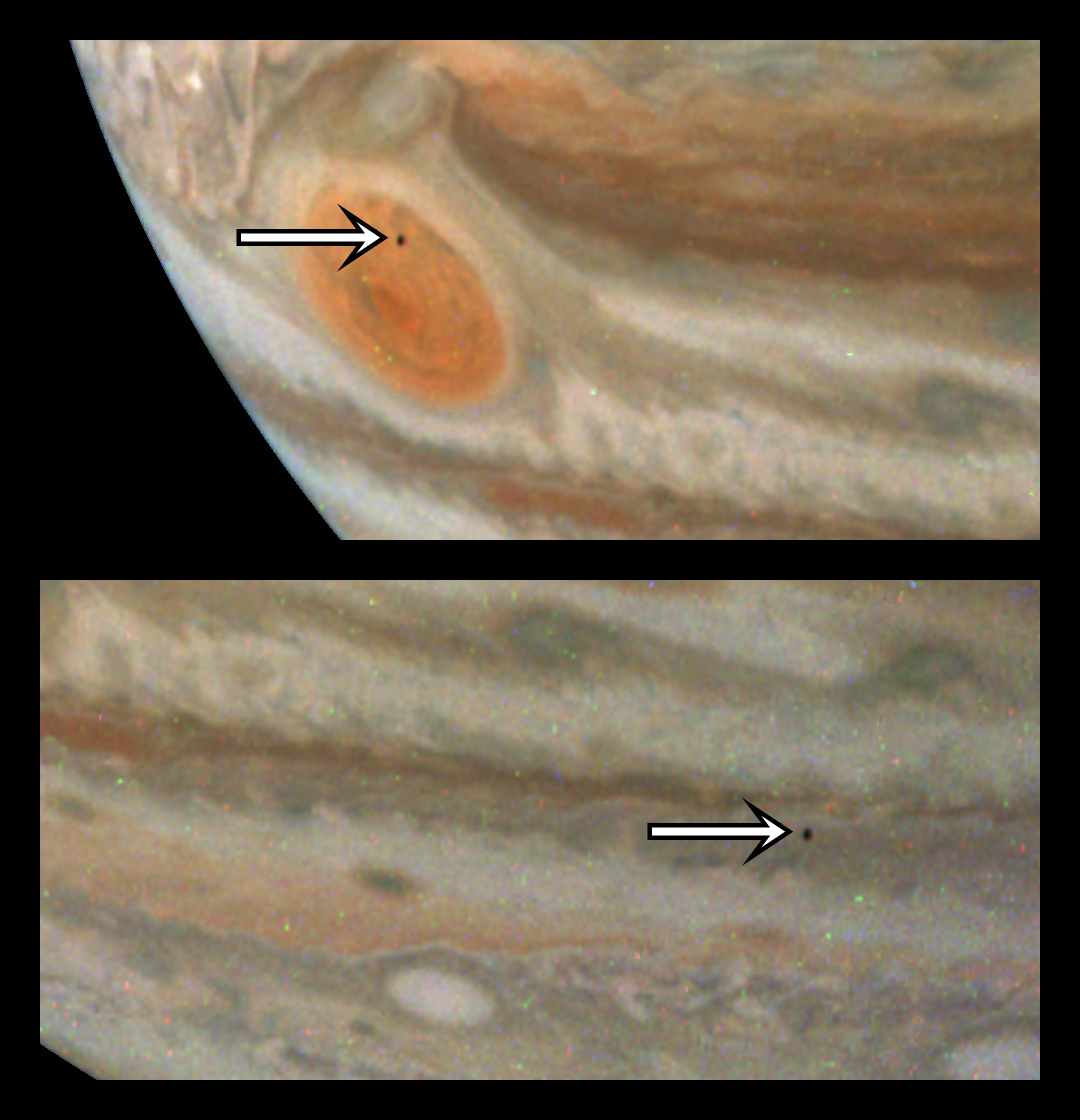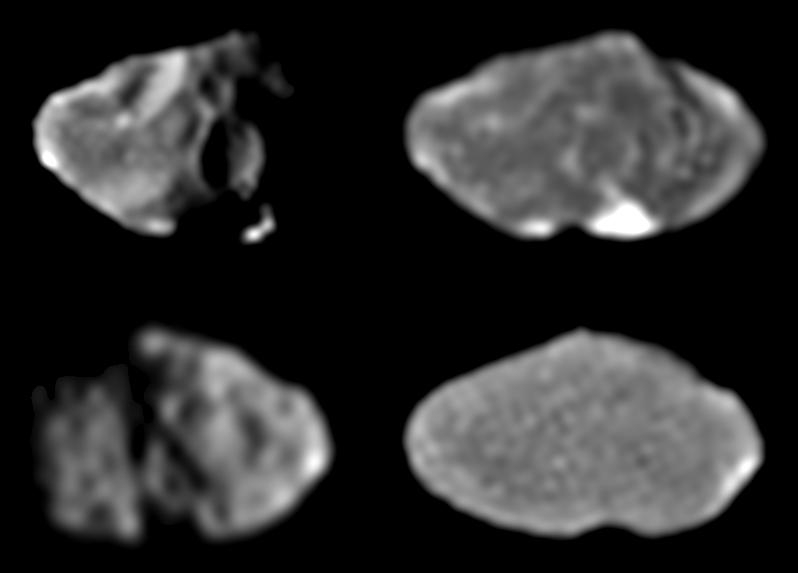Jupiter's mysterious moon Amalthea spied crossing the Great Red Spot (photo)
Amalthea is a rubble pile moon that sports a curiously red surface and an anomalous energy budget.

NASA's Juno spacecraft has spotted the elusive fifth moon of Jupiter transiting the giant planet's Great Red Spot, giving astronomers a rare view of this small but intriguing natural satellite.
Jupiter's most famous moons are its four Galilean satellites: Io, Europa, Ganymede and Callisto, each of which is several thousand kilometers wide. Jupiter's fifth moon to be discovered, and the fifth-largest of the planet's 95 known moons, is Amalthea. It was found in 1892 by Edward Emerson Barnard, an American astronomer who was an outstanding visual observer. He also discovered Barnard's Star, as well as a host of dark nebulae.
Despite being Jupiter's fifth-largest moon, Amalthea has fairly modest dimensions. Irregularly shaped like a potato, its long axis stretches just 155 miles (250 kilometers), and its narrowest point spans a mere 79 miles (128 km). Gravity measurements by NASA's Galileo spacecraft in the early 2000s deduced that Amalthea is little more than a loosely held together rubble pile rather than solid rock.
Related: Jupiter's moons: Facts about the many moons of the Jovian system
Now, Juno has spied Amalthea for the first time, during the spacecraft's 59th close flyby of Jupiter, which occurred on March 7 of this year. Juno's orbit is a long, looping one around the gas giant, with a close encounter (referred to as a "perijove") every 53 Earth days; it was meant to move into a shorter orbit, but a misfiring engine caused by faulty valves means that Juno is staying where it is for the duration.

Juno spotted Amalthea as a tiny black speck set first against one of Jupiter's ruddy, dark cloud belts and then transiting the Great Red Spot itself. The scale is incredible; the Great Red Spot is a vast anticyclonic storm that's currently 7,767 miles (12,500 km) across, while tiny Amalthea is pictured 112,500 miles (181,000 km) above Jupiter's cloud tops.
In fact, Amalthea has the third-shortest orbit of any of Jupiter's moons, revolving around the giant planet every 0.5 Earth days on the inside track relative to volcanic Io's orbit. It shines at magnitude +14, and with it being so close to the glare of Jupiter, Barnard did an incredible job discovering it. Suffice it to say, Juno's task is much easier.
Get the Space.com Newsletter
Breaking space news, the latest updates on rocket launches, skywatching events and more!

Close-up images of Amalthea by NASA's Voyager 1 and Voyager 2 probes and the Galileo spacecraft show several bright spots and craters on the small moon, as well as how mysteriously red its surface is. In fact, Amalthea is the reddest body in the solar system. The identity of this red coating remains unknown, but one possibility is that it is sulfur that has been belched out by Io's volcanoes and made its way across space to neighboring Amalthea.
There's an even deeper mystery with Amalthea, in that it emits a little more heat than it receives from the sun. Where is a moon as small as Amalthea is getting this extra energy from? Several explanations have been put forward, and the truth could be one or a combination of them.
For example, Amalthea is bathed in heat both radiated and reflected by Jupiter, while the vise-like grip of Jupiter's gravity could generate tidal stresses within Amalthea, generating heat. Then there's Jupiter's humongous magnetic field, which generates a magnetic bubble that is the second-largest structure in the solar system after the sun's own magnetic bubble, the heliosphere. Amalthea, on its short orbit, is deeply ensconced within Jupiter's magnetosphere, in a region where there are radiation belts of charged particles that can bombard Amalthea's surface, imparting energy. Finally, the magnetosphere may even be able to induce electric currents within Amalthea's core that produce the extra warmth.
Whatever the answer, it adds to the allure of this fifth moon, often forgotten about next to its famous larger siblings, but with a story that can be just as tantalizing.
Join our Space Forums to keep talking space on the latest missions, night sky and more! And if you have a news tip, correction or comment, let us know at: community@space.com.

Keith Cooper is a freelance science journalist and editor in the United Kingdom, and has a degree in physics and astrophysics from the University of Manchester. He's the author of "The Contact Paradox: Challenging Our Assumptions in the Search for Extraterrestrial Intelligence" (Bloomsbury Sigma, 2020) and has written articles on astronomy, space, physics and astrobiology for a multitude of magazines and websites.









